
Life-Guards in the Don Host
A non-Cossack unit of the Don Host, with an unusual background.
Life-Guard Finland Regiment
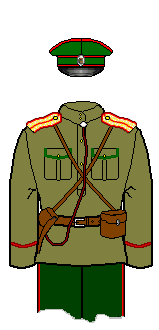 |
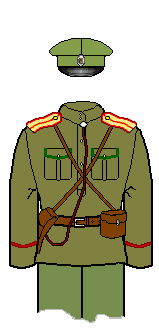 |
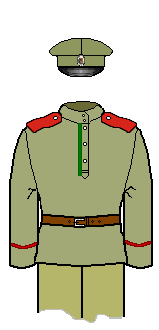 |
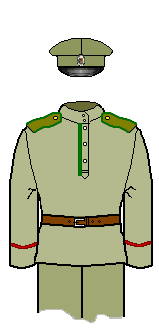 |
| Officer: parade dress | Officer: field dress | Trooper: parade dress | Trooper: field dress |
The official Imperial field dress for guards was the same as for line infantry, except for the lace. The red cuff lace indicated the 2nd Division of the Guards, and the green lace on pockets (officers) and tunic opening (men) indicated the fourth regiment. Officer dress trousers were dark green with a thin red stripe.
It seems unlikely that many of the men wore the lace, but there would not seem to be much point officers reforming the regiment to then go and then completely ignore its traditions.
Uniform Details
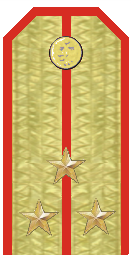 |
 |
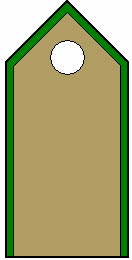 |
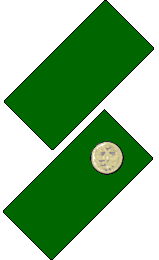 |
| Shoulderboards: Poruchik (Lieutenant) | Shoulderboards: Private coloured side | Shoulderboards: Private field side | Greatcoat collar tabs |
Dress shoulderboards were blue piped red and the unit monogram in red for troopers. Buttons and officer lace were gold. Officer's monogram in and rank markings were in gold.
There was no cipher.
We would guess any papakha were khaki or civilian.
Figure D4 in the Whites Osprey shows how a guards private might look, although a different regiment.
History in the RCW
The Life-Guard Finland Regiment (often given as Finlandski Regt.) was in the former Imperial Guard. It was revived by 27 officers of that regiment in the Don Host, probably as part of the Astrakhan or Southern Armies. Obviously most of the men in the ranks were not former guardsmen, and we would guess that few were even Cossacks.
The regiment was placed in the 2nd Don Infantry Brigade, which in October 1919 consisted of:
Life-Guard Finland Regiment – 828 bayonets, 45 MGs
3rd Don Rifle Regiment – 825 bayonets, 46 MGs
Don Training Regiment – 530 bayonets, 130 sabres, 18 MGs
Engineer Company – 132 men
17th Don Battery – 4 guns
English Trench Battery – 7 guns
1st Don Heavy Battery – 2 guns
2nd Don Rifle Artillery Divizion – 8 guns
In the Crimea the remaining Finlandtsy became a company in the 2nd Battalion of the Composite Guards Infantry Regiment, and so were no longer with the Don units.
Flags
In 1906 the Finland Regiment was awarded a 1900 St George Anniversary banner with St Andrew Anniversary tape on the pole. Colours were red and green for its position in the guards. I have a photo of what appears to be this flag in emigration, so perhaps it was flown in the RCW.
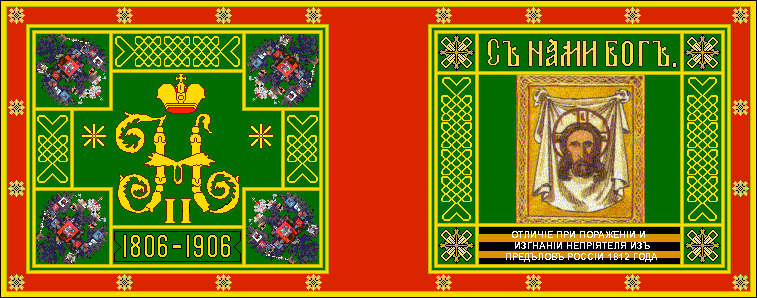
Being guards however, they also had battalion flags gifted to them. They seem to have looked like this for the first three battalions. However, I have no information about any of these making it to South Russia.
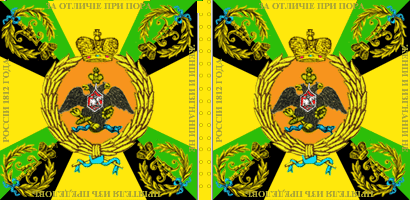
source:vexilliographia.ru
The official WWI regimental HQ field flag was an orange diamond inside a dark green field with the LGF cipher in black.
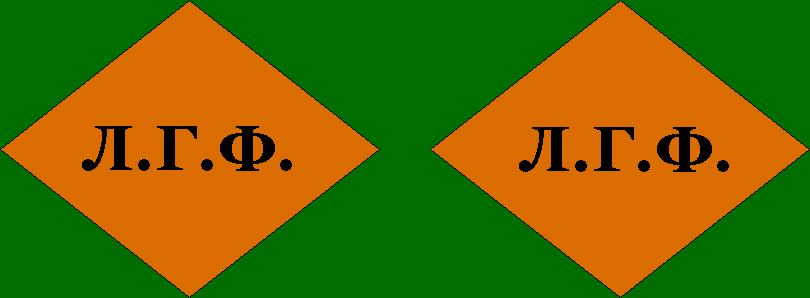
Other Similar Units
Other revived guards units were in the Volunteer Army's Composite Guard Infantry Regiment, briefly Brigade and then Division. This fought in the Ukraine in 1919 and took part in Bredov's march to Poland.
The uniform of the of the Imperial Jäger Regiment (Yegerksi) was identical to the Finland one except the cuff lace on the blouse was white. It was revived with a company in the 1st Composite Guards Regiment, and grew to a full four-company battalion by late 1919. Since few men can have won the lace in the RCW, they become basically identical.
Photos
We have no photos we can identify as Finlandtsy in the Civil War.